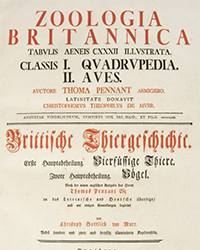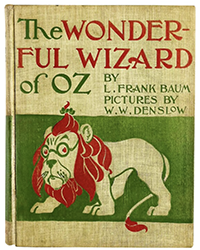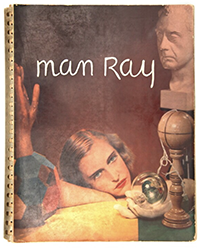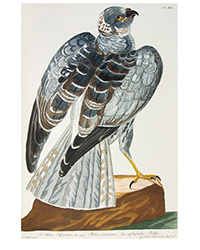The author of Le Voyage de Figaro En Espagne (Saint Malo, 1784), they say, never set a foot in Spain. It doesn’t really matter. His narrative is a pretext to draw a vitriolic portrait of a country plagued by the Inquisition and many other evils, be they small or big. This is not a travel book, but a philosophical pamphlet against all the “18th century Spains” in this world.
Got an edition from 1796, and it all started with an irritating riddle. In its original condition, the bookseller said; meaning covered with a “papier d’attente”. I love these raw books, but this particular one looks suspicious. The covering paper is old indeed, and it was glued on a temporary endpaper taken from another book: we can decipher the words IMPRIMERIE ROYALE MDCCXCL when holding it against a light. There’s a handwritten sticker on the back that reads Voyage d’Espagne, but the ‘s’ should have been spelt ‘f’; unless the writing was done at an ulterior date. Then the edges of the paper seem too straight for an uncut book. The upper part of page 19-20 was folded on the inside and has escaped the cutter. When unfolded, it reveals a 2 centimetre wider (and far less regular) margin. So was this book bound, then disbound and covered with old paper? Could be. Then I realized that the back was sewn in two points only, which is typical of unbound books. Boy! This travel into the dark parts of old books leads us nowhere fast. I decided to travel to “Spain” instead, so I started to read.
The map joined to our edition (Paris, 1796) is of little use as this book is not actually about travelling. It’s about drawing a philosophical, or vitriolic portrait of Spain at the end of the 18th century. The anonymous author was soon identified as Jean-Marie-Jérôme Fleuriot, Marquis de Langle (1749-1807). A former “black musketeer”, he allegedly never set a foot in Spain—but this point seems arguable. The first and anonymous edition of his book had such an impact that the Spanish ambassador in France had it banned and burnt in public. This only ensured it a wider diffusion. It was reprinted many times over the years, and translated into several languages, including English under the title A Sentimental Journey Through Spain... (London, 1786). Langle’s straightforward style is unusual. The incipit speaks for itself: “A pile of stones marks the limit.” Enter Langle’s Spain!
The country of the Inquisition, where people suffocated under the yoke of superstitious religion was no paradise to a Dionysian philosopher like Langle. He clearly loved free and blossomed women, and he deplored the way some of them wasted their lives over religion. “A young girl of 13 suddenly feels the thrill of love; she finds herself tormented with desire—she tells her confessor. According to him, this is the call of God.” He then sends her to the dark cell of a silent Convent, and then it’s too late. “The door to the world is locked behind her, she must wet her bed with tears, she must die between those dry walls, tormented with desires that neither fasting, nor religious hymns, nor the pleasure that God gives her in her sleep could ever moderate, or quench.” Langle was also an advocate of abortion: “Abortion destroys nothing,” he says. “It dissolves a mass of flesh without life or feelings; it extricates a polyp, a piece of nothing; it breaks an egg.” At one point, Charles Quint also meant to put adulterous women to death. “And such a law would exist in a country where (...) a young girl is often forced by her family to marry an old man; she must kiss him, keep him warm, revive him, breath his own breath, put her mouth on a monster’s mouth, a satyr’s mouth, of a half-dead husband, who’s got money.”
Langle didn’t like bullfights (those dreadful atrocities), or the pilgrimages (the shells you’ll find at St James of Compostela won’t heal toothaches or jaundice more then the oysters’ shells you’ll find at Saint Malo, France), or the Place Mayor in Madrid (it doesn’t deserve its reputation)—but the Inquisition is what he hated the most. “Auto-da-fé are less frequent nowadays, but every now and then, in order to entertain the people, or to summon the rain or the sun, they burn a sorcerer or two. Most of the time, their victim doesn’t even know why he or she is sent to death. The Inquisitors will kill you without a word.” The trials took place in the Dominicans’ church, then the culprit was taken to the Great Square. “A scaffold is erected, an altar. Ite missa est, is the signal—they throw the poor wretch into the fire. They spray the scaffold, the public, the patient; and they sing a miserere. The executioner disperses the ashes, the saint officers leave the place singing, and twenty thousand souls have watched this odious spectacle.” Langle was also outraged about poverty. “The most accusing scene for a government and our laws is a naked child who tells you: I’m hungry. To be alive, and not having enough to live is a contradiction. Every being is entitled by his or her birth to everything he or she needs to survive.” Hence his complacency towards crime: “If they are more numerous here than anywhere else, we must blame it on extreme poverty. In any place, crime will always be the natural resource of men who are hungry, and who have nothing.” As Machiavelli would say: this saying would be true should all men be good; but as they are all wicked...
This book might have become dangerous for its author. Printing a follow-up entitled Voyage de Figaro à l’Isle de Teneriffe (1786), the anonymous printer states: “Figaro (Langle) wanted to travel all over the world. But he didn’t seem pleased with the idea of ending up on a scaffold. So he decided to rest on his laurels and to retire.” Langle’s book is thrilling and exciting at first, but it gets a little bit redundant after a while. The printer of the 1796 edition appropriately quotes Seneca on the title page: “Take heed of such a carefully crafted work; it’s the fruit of a mind focused on little things.” But as Beaumarchais once put it, Langle was living in a world where “little men are afraid of little writings”.
T. Ehrengardt


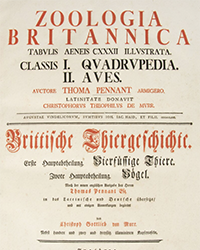
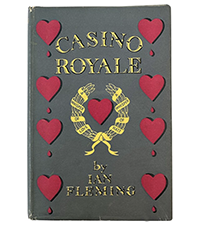
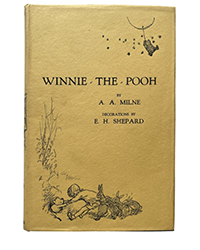
![<b>Sotheby’s:</b> Ernest Hemingway. <i>Three Stories And Ten Poems,</i> [Paris], (1923). First edition of Hemingway’s first published book. $75,000. <b>Sotheby’s:</b> Ernest Hemingway. <i>Three Stories And Ten Poems,</i> [Paris], (1923). First edition of Hemingway’s first published book. $75,000.](https://ae-files.s3.amazonaws.com/AdvertisementPhotos/acf970a0-a15d-4c79-aa24-5e8e414cb465.png)
